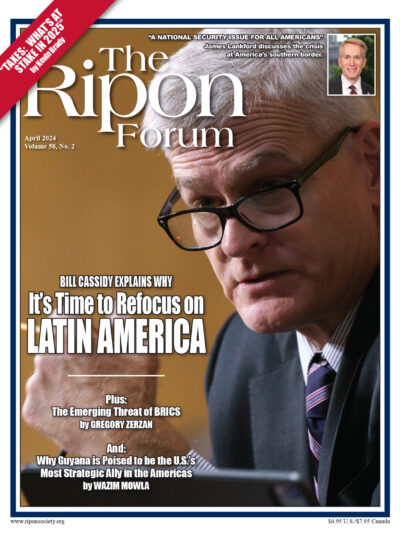
On December 22, 2017, President Donald Trump signed into law the Tax Cuts and Jobs Act (TCJA). The TCJA made important progress toward improving the U.S. tax code, but much of that bill is scheduled to expire at the end of 2025. This means that taxes are set to rise. A lot.
Enacted with only Republican support, the TCJA made dramatic changes to the U.S. tax code. It reduced the corporate tax rate from 35 percent to 21 percent and enacted a long-overdue international tax reform. Reforms to individual income tax policy included reducing most ordinary income tax rates, doubling the child tax credit, and nearly doubling the standard deduction.
The TCJA also included a number of reforms to broaden the tax base, including eliminating the personal and dependent exemptions, establishing tighter limits on the mortgage interest deduction, and putting a $10,000 cap on the state and local tax (SALT) deduction.
The TCJA simplified the tax code for households by dramatically reducing the number of itemizers, from 46.9 million in 2017 to just 17.5 million in 2018. The corporate reforms made U.S. corporations more competitive globally, curtailed the trend of corporate inversions, and, in conjunction with other reforms, significantly boosted domestic investment in the United States. One recent study estimates that the TCJA will boost the domestic corporate capital stock by 7 percent and the global capital stock of U.S. firms even further. These boosts in investment will increase overall output and, over time, lead to higher wages.
Democrats will likely be interested in keeping provisions that benefit taxpayers earning below $400,000, but will also likely fight to both raise taxes on higher-income earners and corporations.
Next year, many TCJA provisions are set to expire. Virtually all individual income tax changes and a reduced effective tax rate on pass-through income (Section 199A) are scheduled to sunset on December 31, 2025. This is not the first time major tax legislation was enacted on a temporary basis. Major tax reforms in 2001 and 2003 were set to expire in 2010 before being extended to 2012 and then made permanent for households earning less than $250,000 a year.
There will be pressure to extend these tax policies, but policymakers should be concerned about the fiscal burden of a straight TCJA extension. Should Congress extend the TCJA permanently, it would add almost $4 trillion to the federal debt in the coming decade. This would come at a time when the fiscal outlook is bleak. Debt is already set to rise from 99 percent to 166 percent of GDP by 2054 without a TCJA extension.
Ultimately, lawmakers will face a host of options as they navigate this upcoming tax cliff, and those options will hinge on the outcome of the 2024 election.
Should President Biden win a second term and Republicans hold control of the Senate, House, or both, the fate of the TCJA will depend on a negotiation between the parties. Democrats will likely be interested in keeping provisions that benefit taxpayers earning below $400,000 – quite costly itself – but will also likely fight to both raise taxes on higher-income earners and corporations and expand tax relief to low-income households.
While the 21 percent corporate tax rate and reforms to international tax policy are not scheduled to expire, nothing prevents Congress from raising the corporate rate or making other corporate reforms to offset the cost of extending other provisions. President Biden has proposed a 28 percent corporate rate and a “billionaire’s tax” on those with assets more than $100 million.
If Republicans sweep, they will likely be interested in extending all provisions of the bill they wrote in 2017.
If Republicans sweep, they will likely be interested in extending all provisions of the bill they wrote in 2017. It remains to be seen whether they would curtail the price tag by pursuing additional revenue-raising reforms. One source of potentially offsetting revenue to watch in this scenario is trade-related. Former President Trump has repeatedly suggested that he will impose significant new tariffs. Such a move could offset much of the revenue loss from extending the TCJA. Nevertheless, as a matter of economics, this strategy would be detrimental. Prices would rise, exports would fall, and the U.S. would be a less desirable place to operate a global business.
A better approach? Embrace a fundamental tenet of tax reform: revenue neutrality. Keep those aspects of the expiring provisions that can be offset with additional reforms to broaden the tax base. Further curtailing the SALT deduction, slowing the growth of the standard deduction, and subjecting a portion of employer-provided health insurance to taxation are all sound policy reforms to consider. While this approach could prove politically challenging, such is the reality of achieving fiscally responsible, pro-growth tax reform. In other words, pursue TCJA 2.0.
Alex Brill is a senior fellow at the American Enterprise Institute. He previously served as the policy director and chief economist of the Ways and Means Committee.




